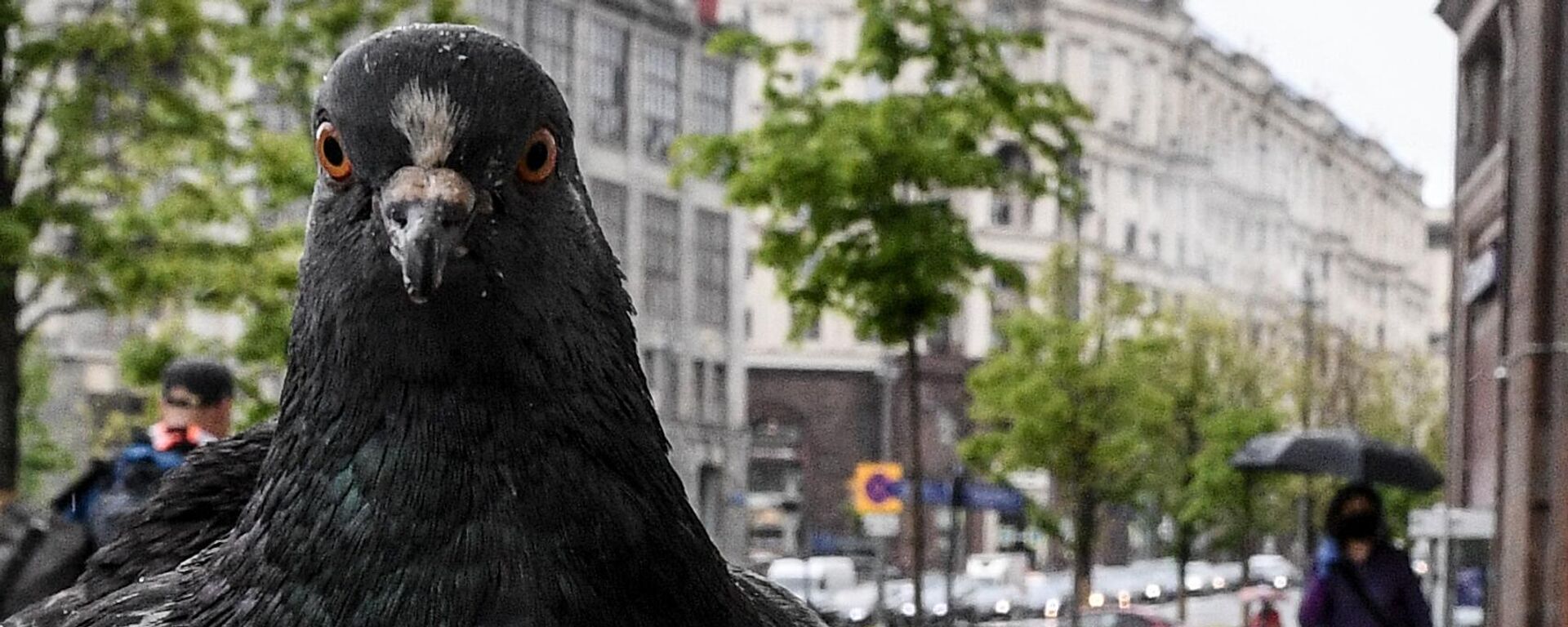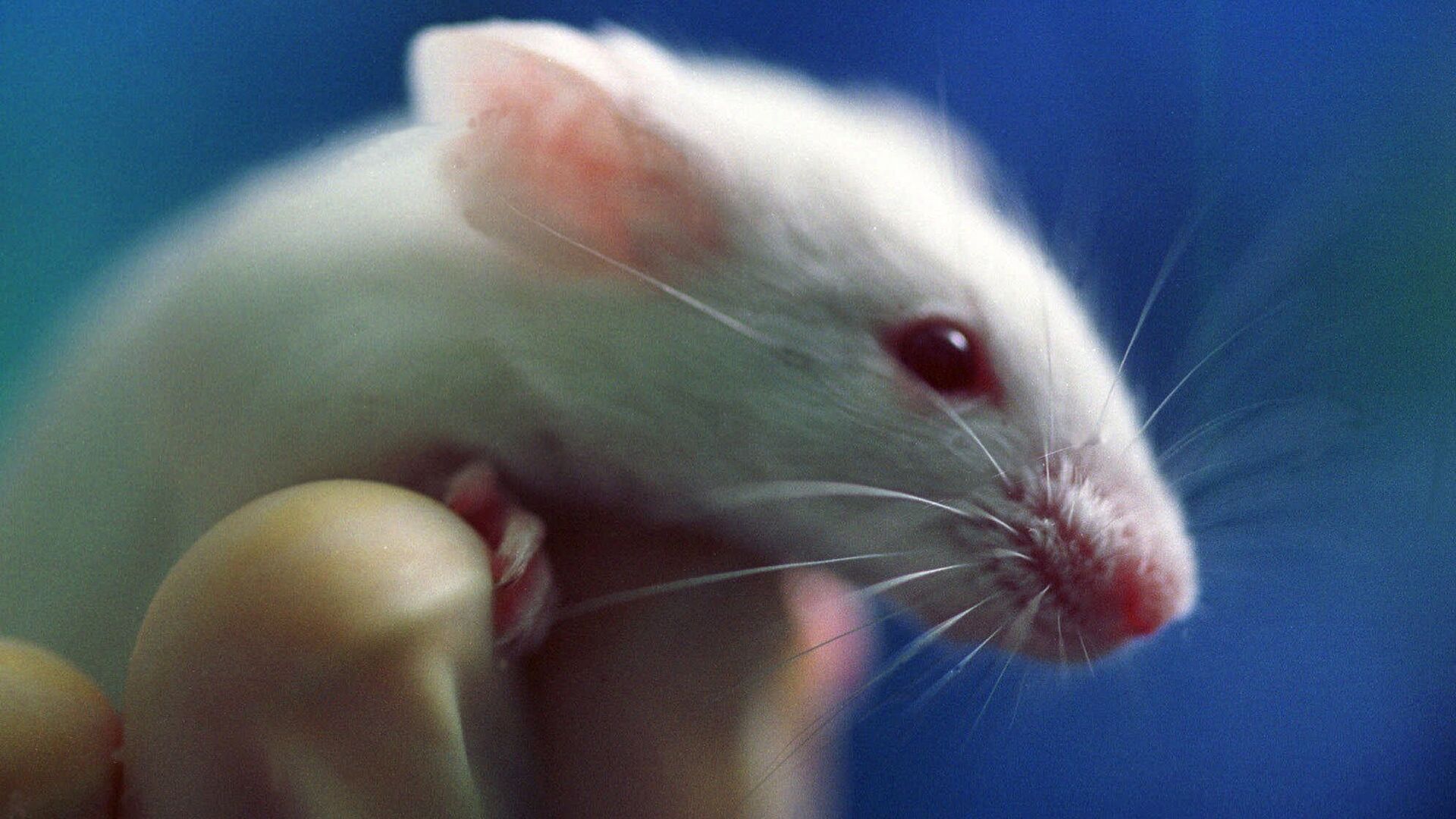https://sputnikglobe.com/20231206/beyond-cheese-and-mazes-mice-can-recognize-themselves-in-mirrors-research-reveals-1115432479.html
Beyond Cheese and Mazes: Mice Can Recognize Themselves in Mirrors, Research Reveals
Beyond Cheese and Mazes: Mice Can Recognize Themselves in Mirrors, Research Reveals
Sputnik International
How animals recognize themselves visually is rarely studied and is poorly understood. But new research has revealed that mice demonstrate a form of self-recognition known as mirror-stimulated self-directed actions.
2023-12-06T18:29+0000
2023-12-06T18:29+0000
2023-12-06T18:29+0000
beyond politics
science & tech
university of texas
society
https://cdn1.img.sputnikglobe.com/img/107110/10/1071101039_0:157:1992:1278_1920x0_80_0_0_c0a766b5d548ae6862ba2de01cdcc18e.jpg
Neuroscientists at the University of Texas have released a groundbreaking study in the scientific journal Neuron revealing that mice may be able to recognize themselves in mirrors. This study reveals new aspects of animal cognitive abilities and the brain's role in self-recognition.The experiment used a group of black mice, each with a distinct white mark painted on their forehead, who were exposed to their reflection in a mirror. The researchers found that mice already used to mirrors and raised among similar-looking cage-mates spent more time in front of the mirror, attempting to scrape off the white paint. This behavior, indicative of self-recognition, was linked to a specific set of neurons in the hippocampus — an area crucial for forming and retaining visual self-perception.Further investigation revealed that vital neurons in the lower part of the hippocampus became active during the self-recognition process. When these neurons were intentionally removed, the mice no longer recognized that the white mark was out of place.Additionally, gene expression analysis showed that mice raised in social isolation lacked the neuronal activity in the hippocampus associated with self-recognition. This finding underscores the importance of social experiences in developing neural pathways related to self-knowledge.Neuroscientist Takashi Kitamura, the study's lead author, stressed the importance of the research to understanding how the brain processes self-identity, a relatively unexplored area compared to the recognition of others.The researchers noted that while mice can detect changes in their appearance and pass the mirror test, this does not conclusively prove self-awareness. Unlike humans and chimpanzees, who do not require strong stimuli for self-recognition, mice need substantial sensory cues such as a visible mark to notice changes.
https://sputnikglobe.com/20231028/scientists-discover-what-pigeons-and-ai-have-in-common-1114550233.html
Sputnik International
feedback@sputniknews.com
+74956456601
MIA „Rossiya Segodnya“
2023
Chimauchem Nwosu
https://cdn1.img.sputnikglobe.com/img/07e7/09/01/1113046371_0:99:1536:1635_100x100_80_0_0_9c5c627283eca931c39fe4852bbb301c.jpg
Chimauchem Nwosu
https://cdn1.img.sputnikglobe.com/img/07e7/09/01/1113046371_0:99:1536:1635_100x100_80_0_0_9c5c627283eca931c39fe4852bbb301c.jpg
News
en_EN
Sputnik International
feedback@sputniknews.com
+74956456601
MIA „Rossiya Segodnya“
Sputnik International
feedback@sputniknews.com
+74956456601
MIA „Rossiya Segodnya“
Chimauchem Nwosu
https://cdn1.img.sputnikglobe.com/img/07e7/09/01/1113046371_0:99:1536:1635_100x100_80_0_0_9c5c627283eca931c39fe4852bbb301c.jpg
university of texas, neuroscience, groundbreaking study, neuron, self-recognition, animal cognitive abilities, brain, black mice, white mark, mirror reflection, hippocampus, visual self-perception, neurons, gene expression, social isolation, neuronal activity, takashi kitamura, neuroscientist, self-awareness, chimpanzees, sensory cues, mouse mirror test, cognitive research, behavioral neuroscience, hippocampal neurons, self-information processing, neurobiological studies, animal behavior, mirror test, self-recognition in animals, cognitive abilities in mice, experimental neuroscience, neuron activity, animal neuroscience research.
university of texas, neuroscience, groundbreaking study, neuron, self-recognition, animal cognitive abilities, brain, black mice, white mark, mirror reflection, hippocampus, visual self-perception, neurons, gene expression, social isolation, neuronal activity, takashi kitamura, neuroscientist, self-awareness, chimpanzees, sensory cues, mouse mirror test, cognitive research, behavioral neuroscience, hippocampal neurons, self-information processing, neurobiological studies, animal behavior, mirror test, self-recognition in animals, cognitive abilities in mice, experimental neuroscience, neuron activity, animal neuroscience research.
Beyond Cheese and Mazes: Mice Can Recognize Themselves in Mirrors, Research Reveals
How animals recognize themselves visually is rarely studied and is poorly understood. But new research has revealed that mice demonstrate a form of self-recognition known as mirror-stimulated self-directed actions.
Neuroscientists at the University of Texas have released a groundbreaking study in the
scientific journal Neuron revealing that mice may be able to recognize themselves in mirrors.
This study reveals new aspects of animal cognitive abilities and the brain's role in self-recognition.
The experiment used a group of black mice, each with a distinct white mark painted on their forehead, who were exposed to their reflection in a mirror.
The researchers found that mice already used to mirrors and raised among similar-looking cage-mates spent more time in front of the mirror, attempting to scrape off the white paint. This behavior, indicative of self-recognition, was linked to a specific set of neurons in the hippocampus — an area crucial for forming and retaining visual self-perception.

28 October 2023, 13:13 GMT
Further investigation revealed that vital neurons in the lower part of the hippocampus became active during the self-recognition process. When these neurons were intentionally removed, the mice no longer recognized that the white mark was out of place.
Additionally, gene expression analysis showed that mice raised in social isolation lacked the neuronal activity in the hippocampus associated with self-recognition. This finding underscores the importance of social experiences in developing neural pathways related to self-knowledge.
Neuroscientist Takashi Kitamura, the study's lead author, stressed the importance of the research to understanding how the brain processes self-identity, a relatively unexplored area compared to the recognition of others.
The researchers noted that while mice can detect changes in their appearance and pass the mirror test, this does not conclusively prove self-awareness. Unlike humans and chimpanzees, who do not require strong stimuli for self-recognition, mice need substantial sensory cues such as a visible mark to notice changes.




